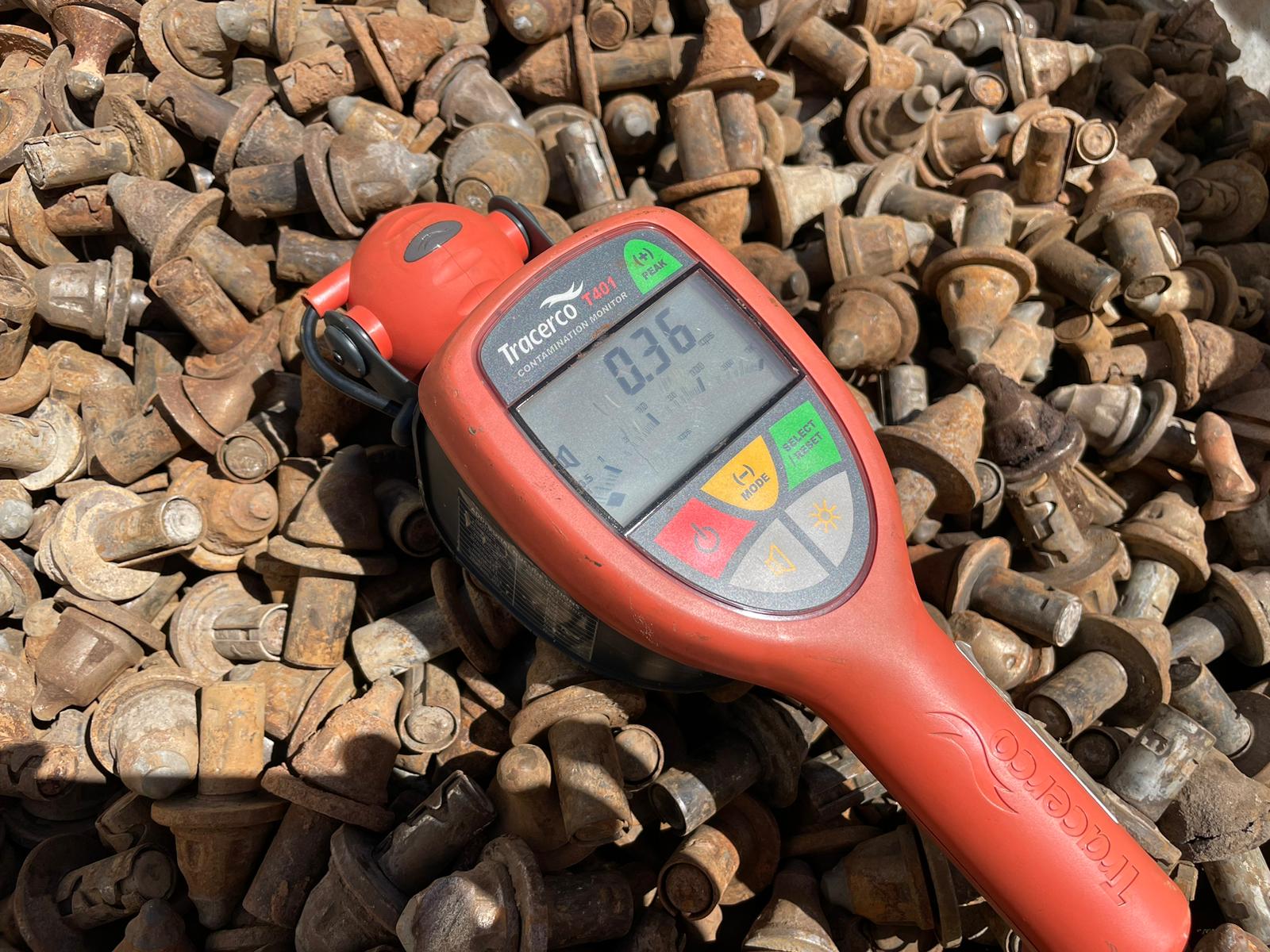Shutdown Economics: How Refinery Turnarounds Create Recycling Goldmines
When maintenance schedules align with maximum material recovery
Refinery Turnarounds as Recycling Goldmines
In Western Australia’s industrial heartlands, refinery shutdowns are a routine part of operations, but they also represent a golden window for high-value scrap recovery. When equipment is decommissioned, catalysts are replaced, and systems undergo maintenance, large volumes of valuable metals like stainless steel and nickel are suddenly released into the waste stream. For those ready to act, these short windows offer outsized recycling returns.
The economics of refinery maintenance mean every dollar matters. Aligning metal scrap recovery with shutdown schedules allows operators to offset costs, boost revenue, and reduce unnecessary waste. From stainless steel piping and nickel alloy valves to high-performance catalysts, the scrap value tied up in shutdown operations is often underestimated, and too often under-recovered.
This blog explores how refinery turnarounds across WA can be transformed into strategic recycling opportunities. We’ll break down the types of metals involved, the logistics of collection during compressed shutdown windows, and the steps industrial operators can take to unlock the full recycling potential of their next maintenance cycle.
Why Shutdowns Generate High-Value Scrap
Decommissioned equipment and stainless steel components
During refinery turnarounds, large-scale equipment is stripped out, cleaned, or replaced, producing significant volumes of stainless steel scrap. Heat exchangers, structural supports, pipework, and tanks are common sources. Many of these components contain high-grade 304 or 316 stainless steel, offering strong recycling value if sorted and tested properly.
Shutting down a refinery creates a unique window where these materials are concentrated, making collection faster and more efficient than routine operations. With correct handling and timing, this stainless steel waste can become a meaningful offset against the costs of the maintenance project.
Catalyst change-outs and nickel-rich material recovery
Catalyst change-outs are one of the highest-value events during shutdowns. Spent catalysts often contain substantial amounts of nickel, molybdenum, or other recoverable metals. If recovered correctly, these can yield strong returns, especially when global nickel prices are high.
Because catalysts are usually replaced in bulk during a fixed window, scheduling recycling alongside this process ensures material is collected while fresh and uncontaminated. Working with a specialist in refinery metal recovery ensures proper testing, grading, and compliant documentation.
Bulk scrap volumes concentrated in short timeframes
Shutdowns compress months’ worth of metal waste into a matter of days or weeks. This burst of activity requires recyclers who can operate quickly and efficiently, coordinating bin placement, logistics, and pickups without slowing down the broader maintenance workflow.
For operators in WA, engaging a metal recycling partner experienced in shutdown logistics is key. The right team can integrate with your schedule, respond to last-minute changes, and ensure that no valuable material ends up in landfill or mixed waste bins.
The Economics of Refinery Metal Recycling
Scrap revenue offsets maintenance costs
Refinery shutdowns are capital-intensive, with costs tied to labour, equipment hire, and lost production time. But the scrap generated during these events, from stainless steel tanks to nickel-rich catalyst materials, represents an overlooked source of revenue. By coordinating with a recycler before the shutdown begins, operators can turn what would be waste into a financial return.
High-value scrap metal sales can help offset shutdown costs, reducing pressure on budgets and improving the ROI of maintenance projects. Even modest volumes of correctly sorted stainless steel and nickel alloys can yield thousands in revenue when processed through the right recovery channel.
Market trends for nickel and stainless steel scrap pricing
Scrap prices for nickel and stainless steel fluctuate with global demand, especially from the construction, automotive, and energy sectors. Nickel, in particular, sees surges due to its critical role in batteries and stainless steel production. Timing your shutdown recycling to align with favourable market conditions can significantly increase payouts.
Operators should monitor commodity trends in the lead-up to maintenance events and consult with local recyclers who understand WA market movements. Locking in a pricing agreement or real-time valuation during a shutdown can maximise returns from recovered materials.
Real examples of ROI from refinery recycling programs
Across WA, several refineries have turned shutdowns into revenue-positive events. In one instance, a mid-size operation in Kwinana recovered over $70,000 in scrap value from stainless steel and catalyst change-outs, all during a two-week maintenance window. Another regional refinery recouped nearly 12% of its shutdown cost through structured metal recycling with on-site testing.
These case studies highlight how pre-planned recycling strategies, combined with local recovery expertise, transform maintenance projects into value-generating opportunities.
Coordinating Recycling During Tight Schedules
Aligning scrap collection with project milestones
Refinery shutdowns operate on tight, non-negotiable timelines. Every hour counts, and delays can cost millions. That’s why scrap metal recovery must be carefully integrated into the shutdown plan from day one. Coordinating with a recycling partner in advance ensures scrap collection is timed to align with equipment dismantling, catalyst change-outs, and tank replacements, not after the fact.
Scrap Metal Recyclers who understand refinery operations can work around critical path items, staging bins, skips, or specialised containers at key collection points. This keeps material flowing off-site without interrupting primary maintenance tasks.
How recyclers work alongside shutdown contractors
Experienced industrial recyclers know how to operate in high-pressure shutdown environments. They liaise directly with shutdown managers, contractors, and safety leads to ensure collection activities don’t interfere with confined space entry, hazardous materials removal, or high-risk tasks.
From confined space protocols to lockout, tagout coordination, the right recycling partner fits into your shutdown team like any other trade, safely, efficiently, and with minimal oversight required.
Managing logistics for large-scale scrap removal
Logistics can be a major bottleneck during refinery maintenance. Scrap piles up fast, especially when replacing large stainless steel vessels, piping runs, or structural components. Without proactive removal plans, sites quickly run out of room, and risk falling out of compliance.
Advanced planning allows recyclers to scale transport accordingly, using flatbeds, tipper trucks, or bulk bins based on projected volumes. In remote WA sites, this also includes route planning and permit coordination to move high-weight loads within narrow shutdown windows.
Key Metals to Watch During Refinery Turnarounds
Nickel alloys in processing equipment and pipelines
Nickel is a workhorse metal in refinery operations, particularly in high-temperature or corrosive environments. You’ll find it in everything from pipework and pressure vessels to heat exchangers and valves. During shutdowns, when these components are replaced or upgraded, there’s often a significant volume of nickel-rich material available for recovery.
Nickel alloys such as Inconel and Monel, commonly used in critical processing areas, carry high per-kilo scrap values. Identifying and separating these alloys before disposal can make a serious difference to your site’s metal recovery ROI.
Stainless steel scrap from structural and high-heat components
Stainless steel is everywhere in a refinery — tank walls, walkways, filter housings, and more. Over time, exposure to heat, pressure, and chemical processes breaks down these components, requiring replacement during scheduled maintenance.
Shutdowns are the best time to capitalise on this structural turnover. By separating stainless scrap grades (e.g. 304 vs 316), you ensure more accurate pricing from recyclers and avoid contamination that could degrade your returns.
Rare or specialty metals in catalysts and valves
Catalysts and process control components often include lesser-known but highly valuable metals — think molybdenum, vanadium, and in some cases, precious metals like platinum group elements. While smaller in volume, these can significantly boost the value of a scrap load when properly recovered.
Specialty metal recovery requires advanced testing and often collaboration with recyclers who specialise in catalyst material. Don’t let these high-grade scraps end up in landfill or mixed bins. They’re a hidden asset within your turnaround.
Maximising Returns from Scrap Recovery
Sorting and testing materials for higher payouts
The first step to unlocking real value during a refinery shutdown is proper material sorting. Mixed bins of stainless steel, nickel alloys, and general scrap can drag down your payout due to contamination and inconsistent grading. Separating materials by type — and even by grade — enables recyclers to offer more accurate, competitive pricing.
Advanced testing such as XRF analysis helps identify exact alloy composition, which is essential when dealing with nickel-heavy components or high-value stainless grades like 316. A few minutes of on-site testing can mean the difference between general scrap rates and premium payouts.
Partnering with certified industrial recyclers
Refinery-grade scrap demands more than a generalist scrap yard. Partnering with certified industrial recyclers ensures your materials are processed correctly, legally, and profitably. These recyclers often provide on-site bins, documentation support, and quick turnaround payments — all of which streamline your shutdown process.
They also understand the compliance and safety requirements that refineries operate under. This means you avoid delays, liabilities, or improper disposal that could cost more in the long run.
Timing scrap sales to match market pricing trends
Nickel and stainless prices are sensitive to global demand cycles. Selling during a price dip can significantly reduce your returns, while hitting a high can turn your scrap load into a six-figure asset. Smart operators monitor pricing in the months leading up to a turnaround and work with recyclers to time collections accordingly.
Some recyclers offer price locks, future contracts, or batch holding services that let you sell at the best possible time — even if your shutdown occurs off-cycle with market trends.

Environmental and ESG Advantages of Refinery Recycling
Reducing landfill waste and emissions
Refinery shutdowns generate a concentrated volume of scrap metal, spent catalysts, and decommissioned components. Without a recycling plan, much of this material ends up in landfill — contributing to unnecessary waste and avoidable emissions. Recycling stainless steel and nickel scrap reduces the demand for virgin mining, cutting energy use and CO₂ output.
Incorporating metal recovery into shutdown planning turns an environmental liability into a sustainability win, supporting both operational efficiency and broader decarbonisation goals.
Circular economy initiatives in industrial operations
By recycling metals during turnarounds, refineries contribute to the industrial circular economy — where materials are reused, reprocessed, and reintegrated rather than discarded. This approach keeps valuable resources in use longer and reduces the environmental footprint of each maintenance cycle.
WA’s resource-intensive industries are under increasing pressure to prove circularity in their operations. Structured recycling programs during shutdowns are an easy, high-impact way to meet those expectations.
ESG reporting benefits from recycling programs
Recycling outcomes are highly reportable ESG metrics. Scrap volume diverted from landfill, emissions avoided through material reuse, and partnerships with licensed recyclers all feed into credible sustainability reporting. These metrics are especially valuable during annual reviews, investor updates, and regulatory audits.
For many operators, recycling isn’t just about waste — it’s about demonstrating leadership, transparency, and compliance in a shifting regulatory landscape.
Conclusion: Turn Maintenance into a Profit Centre
Refinery shutdowns are often seen as cost centres — necessary but expensive pauses in production. But with the right metal recovery strategy, they can also become opportunities for revenue generation, waste reduction, and ESG advancement. From nickel-rich catalysts to stainless steel infrastructure, the scrap generated during turnarounds holds real financial and environmental value.
By planning recycling alongside your shutdown logistics, aligning with market trends, and partnering with certified recyclers, your maintenance window can deliver more than just operational outcomes — it can unlock measurable return on investment.
Contact us to coordinate high-value scrap recovery during your next shutdown.

